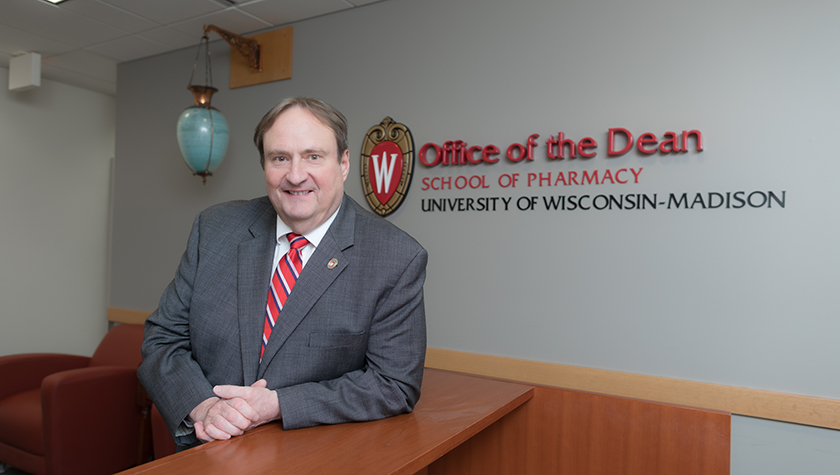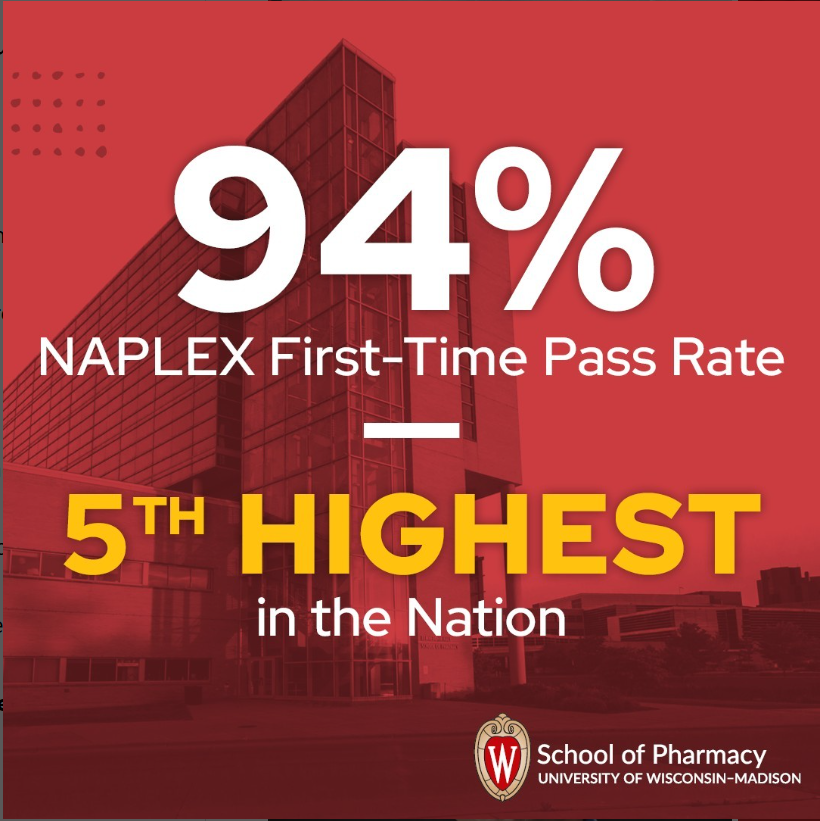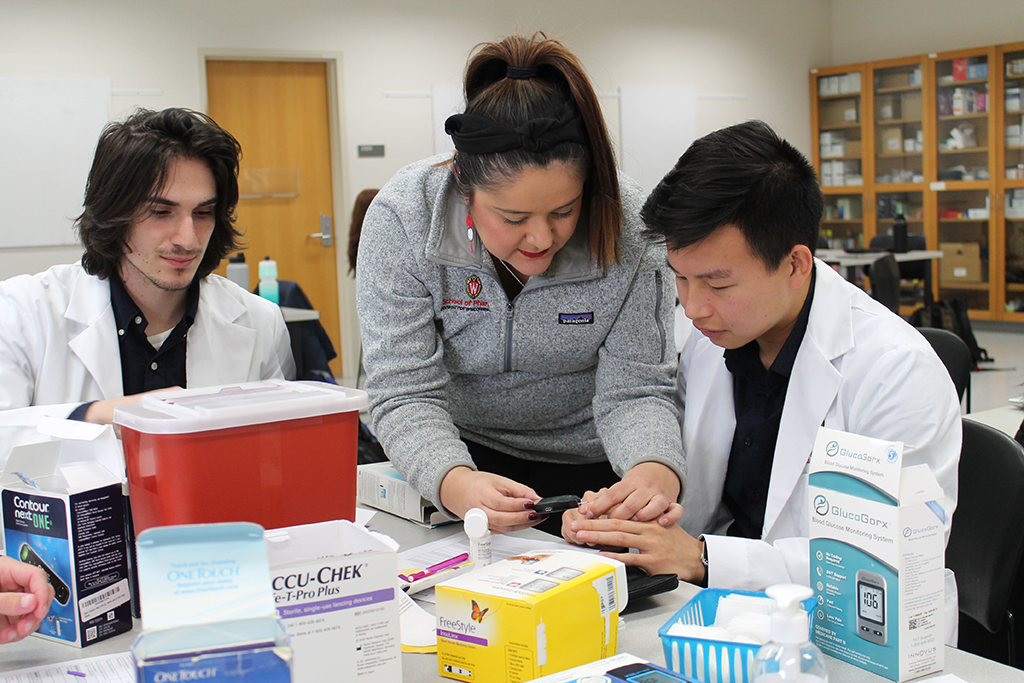
Last winter, I wrote about how applicants to pharmacy schools across the country had declined by over 36 percent during the last decade. Although numbers are not finalized for this application cycle, some good news is that the number of applicants now has increased significantly over this time last year. I would love to be able to say it is due to our increased recruitment work, but those efforts — such as our new early assurance program, building relationships with high school and college counselors, and articulation agreements with other Universities of Wisconsin — will take a few years to come to fruition. The current increase in applicants may only reflect the innate volatility of applicant numbers nationwide. In the past 20 years, our application numbers at the School have varied 14 percent from the average of about 335 applicants per year. Maintaining a large number of applicants will ensure that the school can enroll, educate, and train enough excellent pharmacists to serve the citizens of Wisconsin and beyond. We are confident that our new emphasis on recruitment and scholarship support through the Pharmacy Forward campaign, will do just that.
We are not the only ones focusing on pharmacy student recruitment. The American Association of Health System Pharmacists (ASHP) has recently announced their “We’re Your Pharmacist” campaign to promote awareness of what health systems pharmacists do for their patients and to ensure a pipeline of outstanding applicants to pharmacy schools nationwide. Locally, our Pharmacy Society of Wisconsin, one of the best state pharmacy associations in the country, is helping us to match pharmacists from various parts of our state with our recruitment efforts in those areas. Having pharmacists talk to young people about a pharmacy career is an effective marketing strategy. I think that our newly strengthened and strategic recruitment program combined with the work that our professional associations are doing at the state and federal level will do much to ensure an ample supply of excellent pharmacy professionals in the years to come.
Top rankings
Once students are admitted, our PharmD program prepares students well for the wide variety of opportunities that the degree offers. One excellent national measure of the quality of our students and their preparation is their performance on the North American Pharmacist Licensure Examination or NAPLEX. Last year, 94.2 percent of our students passed the NAPLEX on their first try — the fifth highest in the country out of 142 schools.

You may have heard recently that our School slipped in the U.S. News rankings from 7th to 9th That system is a reputational ranking system based on subjective responses of leaders in the academy, not on actual outcomes or other metrics. None of the other schools that ranked above us in the U.S. News ranking scored better than us on the NAPLEX or the ASHP Match, which are arguably the two best objective national measures of PharmD graduate performance.
Leading education
So how are our faculty and staff preparing our students for success? By providing them outstanding teaching, research, and service opportunities. Pharmacy education has undergone significant philosophical changes in recent decades, such as adopting curricula with horizontal and vertical integration of content and skills. Our faculty have embarked on a process to transform our traditional discipline-based pharmacy curriculum into an organ system based, multidisciplinary integrated curriculum. We envision a curriculum where faculty of different disciplines come together to teach about a particular organ system from their perspective. Our diverse faculty are collaborating to develop a strong, multidisciplinary approach to teaching. Each integrated course will include case studies and will be accompanied by a clinical skills laboratory.

In addition to a modern curriculum, our students also have access to extraordinary experiences while studying at the School. For example, our Office of Global Health provides students with unparalleled summer field courses and clerkship opportunities around the world. The American Institute of the History of Pharmacy, the only one of its kind in the Western Hemisphere, provides our students the opportunity to study with historians whose careers center on pharmacy and pharmaceutical sciences. No other American school of pharmacy offers this.
Our School continues in our tradition of groundbreaking research. For instance, in collaboration with researchers across campus, our faculty have recently established the Transdisciplinary Center for Research in Psychoactive Substances, which focuses on how these substances may provide exciting new therapies for the effective treatment of previously intractable mental health conditions.
So as the number of applicants to pharmacy schools rebounds, we at the School will be ready to educate and train them because today’s School, consistent with our proud history, never stops innovating.
On, Wisconsin!
Steve